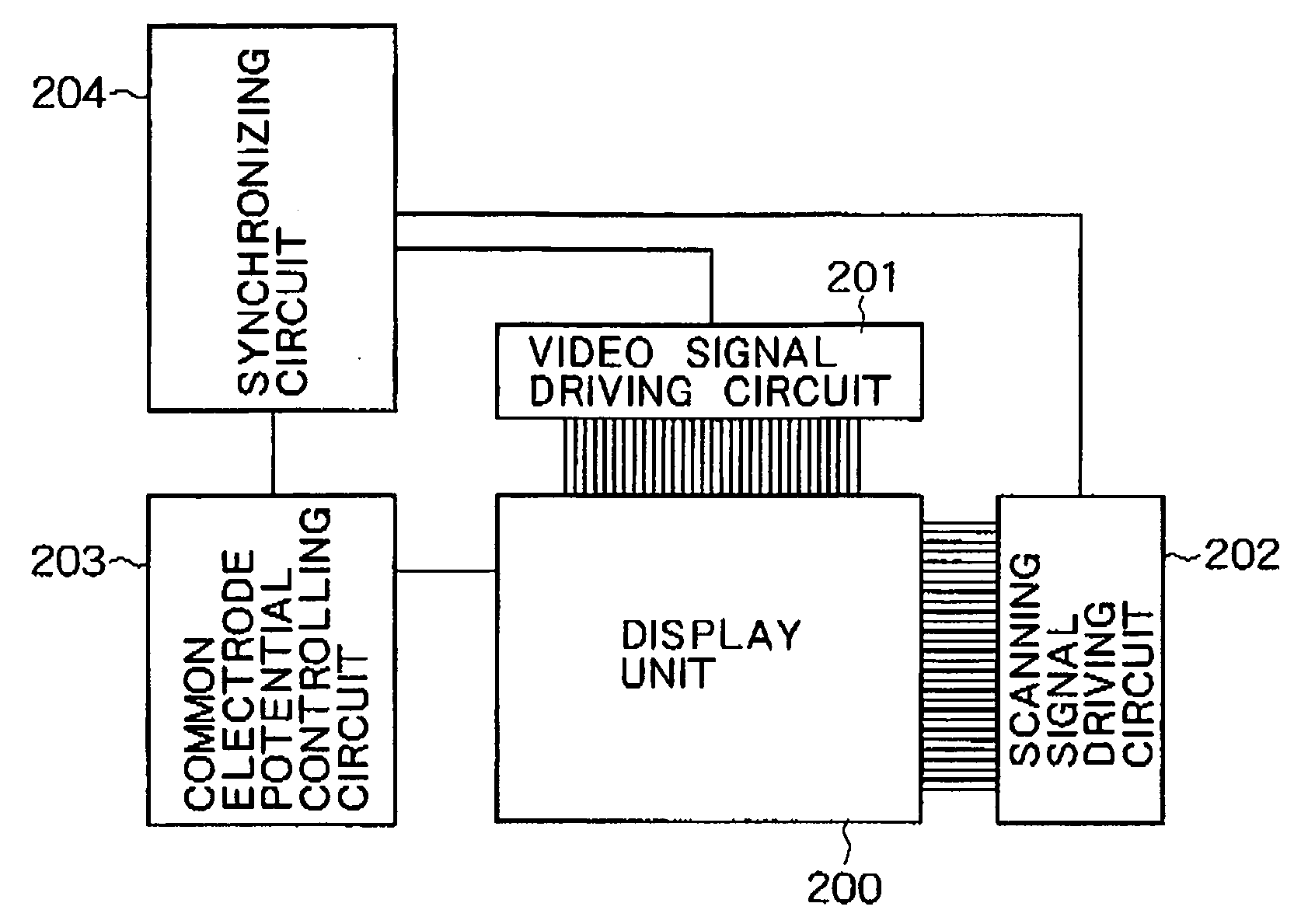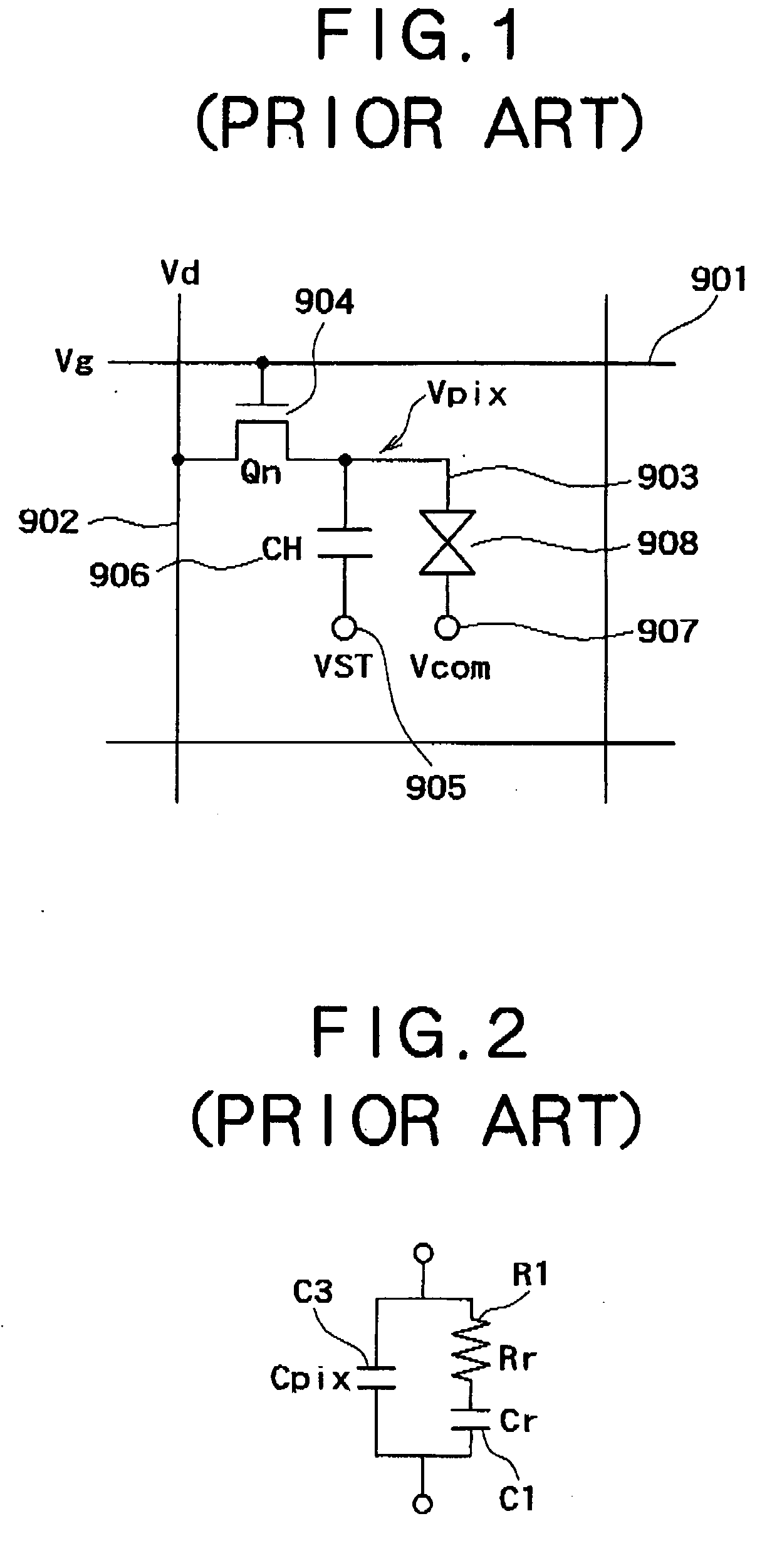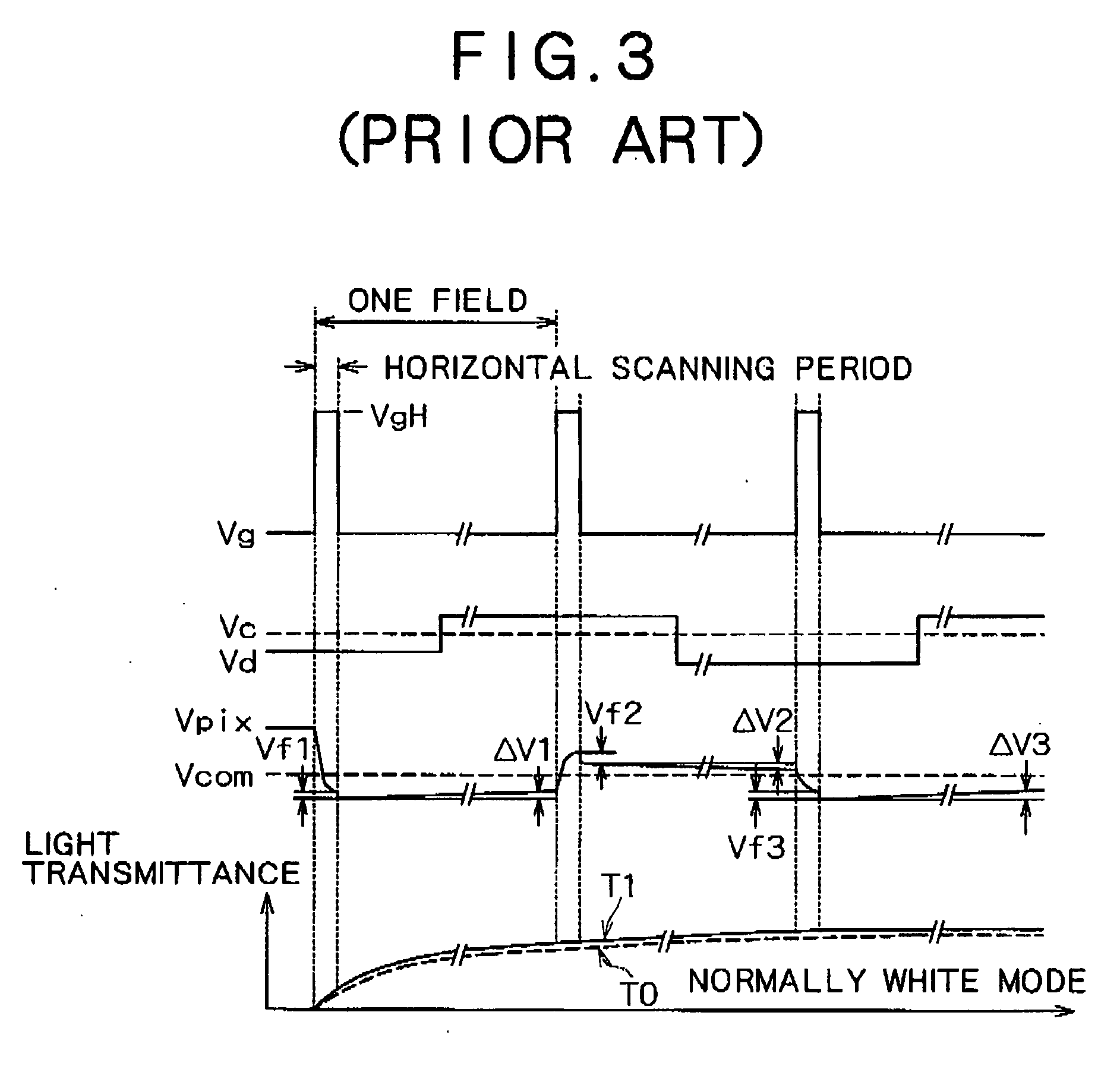When the conventional TN type
liquid crystal display elements are subjected to simple matrix driving, it has been found that their display quality is not high and their number of scanning lines is limited.
However, since the STN type liquid
crystal display apparatuses are low in response speed, these are not suitable for moving image displays.
Even in such high-speed nematic liquid crystals, the following problems arise.
Such a change in the holding
voltage, that is, a change in an effective applied
voltage makes the contrast lowered due to insufficient writing.
However, the foregoing liquid
crystal display apparatuses, that is, the display apparatus using the overdrive, the display apparatus using the reset drive, the display apparatuses disclosed in the documents such as the first publication, and so on have several problems.
A first problem is as follows: in the overdrive
system, the rise response (on-
time response) speed of the liquid
crystal can be increased, while the response speed is on the order of ten and several milliseconds to several tens of milliseconds at most due to limited materials for the liquid crystal.
Moreover, as described below, the fall response (off-
time response) speed cannot be increased so much.
Moreover, with the items (2), (3), and (5), since all
viscosity, the
dielectric anisotropy, and the elastic constants are
physical property values, these are highly dependent on the materials of the liquid crystal and hence, it is difficult to set these at values which exceed certain conditions.
And further, it is very difficult to significantly vary any one of the
physical property values and hence, it is difficult to achieve an effect on the high-speed response expected from the expressions.
Because of this, these can be adjusted a little, but it is difficult to achieve improvement above scores of percent.
Still further, with the item (4), the method for increasing the value of the applied voltage also has a considerable limitation in terms of
power consumption and the increased production cost of the high-voltage driving circuit.
In addition, when the display apparatus is driven by providing an active element such as a
thin film transistor, the response speed is limited by the withstand pressure of the element.
As described above, there is a considerable limit to the fast response speed achieved by using those conventional means including the overdrive in principle.
A second problem is that in the overdrive
system, the rise response (on-
time response) can be sped up but the fall response (off-time response) can be hardly sped up.
A third problem is that in the conventional overdrive
system the voltage required for the overdrive is high.
The video signals of the display apparatus are high-frequency signals and hence, in the overdrive system in which the voltages of the video signals are increased,
power consumption, which is determined by the voltage and the frequency, has been increased significantly.
Moreover, since there is a need to produce the high-frequency high-voltage signals, it is difficult to use the same driving IC and
signal conditioning system as those of conventional display apparatuses, so that a need to use ICs fabricated by using a special process or expensive ICs has often arisen.
A fourth problem is that in the reset system, a method of applying reset signals via a pixel switch has the disadvantages that the structure of a driving system becomes complex and
power consumption is increased.
Moreover, since the scanning lines are driven at the time of not only the writing of the video signals but also the writing of the reset signals, the frequencies of signals for the scanning lines having the highest
voltage amplitude in the display apparatus are increased, thereby power consumption is increased.
A fifth problem is that in the reset system, the state of the display considerably changes due to the reset of an excessive or short degree.
This problem also holds true for the method described in the first publication which is created by combining the overdrive system and the reset system.
First, the reset is excessive, the
initiation of the optical response of the liquid crystal after the reset becomes slow and abnormal optical responses are observed before the
initiation of normal optical responses.
As shown in FIG. 21, when the reset is excessive, delays in the optical responses and abnormal displays (such as the transient rise in
transmittance) develop.
On the other hand, in the reset system, the shortage of the reset effects a situation where when the same data is written several times, the same
transmittance cannot be sometimes obtained.
Because of this, a desired
gradation cannot be attained or even when the same
gradation is displayed, brightness varies greatly.
A sixth problem is that it is difficult to attain stable display over a wide temperature range.
Furthermore, since the shortage of the reset occurs at low temperatures, the problem that the correspondence between the applied voltage and the
transmittance is not established arises, thereby a desired
gradation cannot be obtained or
flicker is caused.
 Login to View More
Login to View More  Login to View More
Login to View More 


